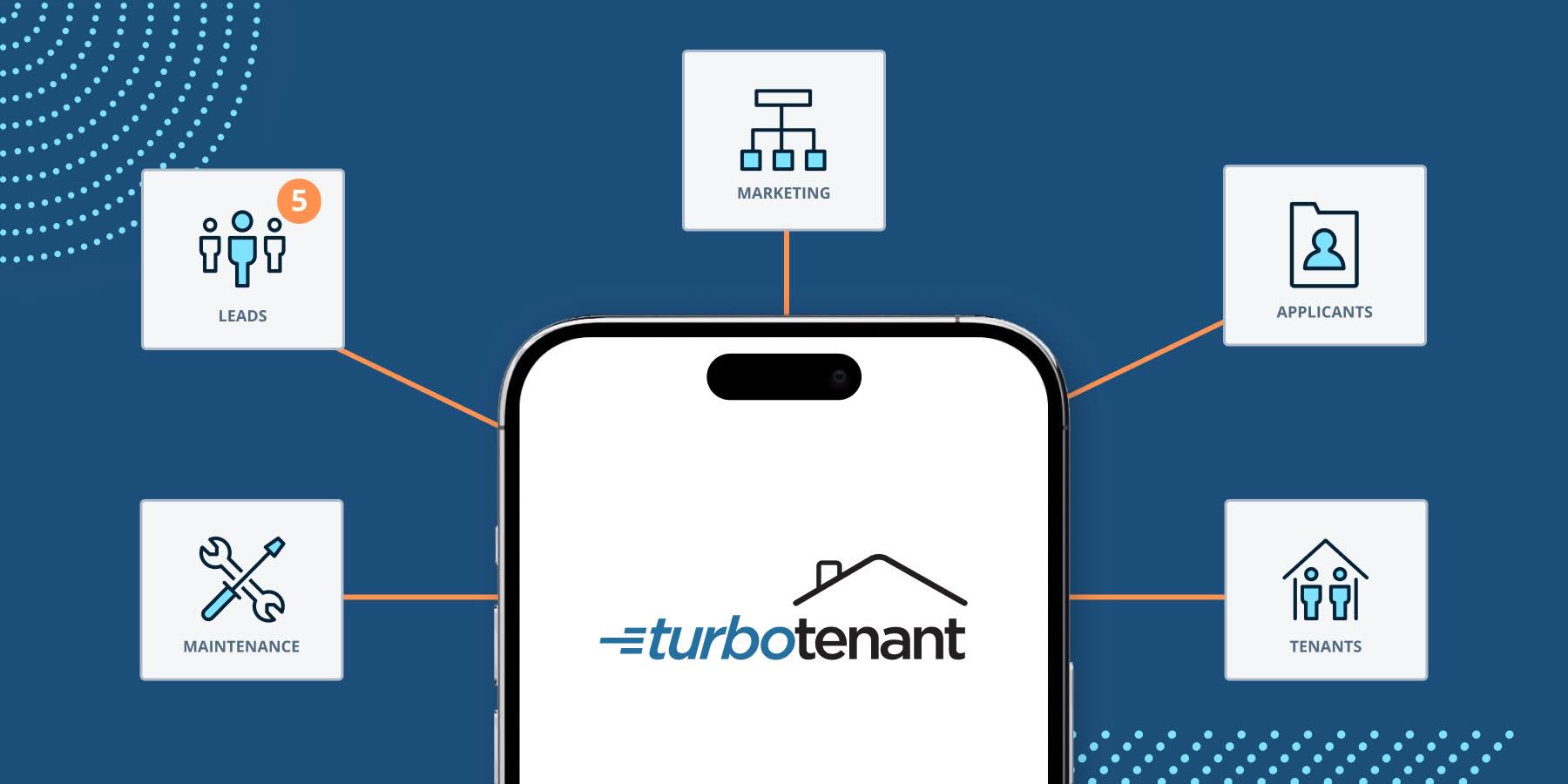Maybe you purchased the perfect rental property in a great neighborhood. Perhaps you inherited a home you don’t know what to do with. Also, you could have decided to rent a room in your house for extra cash. Regardless of how you got here, you’re probably wondering how to be a landlord in Ohio. Look no further.
In this guide, we’ll review everything you need to know when becoming a brand-new Ohio landlord. Alternatively, maybe we’ll refresh your memory if you’ve been doing it for a while. We’ll dig into market research, proper investment forecasting, local landlord-tenant law, and how much TurboTenant can help you every step of the way.
So grab some coffee, pick up your pencil, and let’s learn all about landlording in Ohio.
Marketing. Applications. Leases. Payments.
Research The Market
Before you do anything, prepare by learning everything about the market you’re considering. Whether you live in the area or a few states away, doing your due diligence will reveal more about the state of the rental market.
Research everything you can think of, like:
- What does the current job market look like? Are people generally employed with good-paying jobs?
- How many people have moved to the area in the past few years? Are they renting or buying homes?
- What’s the existing rental market like? Will you bring a much-needed vacancy to the table, or will you have to price it to move because of high inventory?
- Check out the neighborhood around your rental property. Is it close to public transportation and entertainment options? What do people there typically pay in rent?
- Ohio doesn’t require landlords to have a license to rent their properties, but some states and municipalities do. Make sure you know the local rules before listing your unit.
The more upfront legwork you do, the easier the rental process will be. So take some time to think through your options before moving on to the next phase — crunching the numbers.
Do Some Math
Since you’ve decided to learn how to be a landlord in Ohio, it’s also time to learn how to be a good real estate investor. As a big part of your research into the rental market you’ve chosen, you’ll want to dive into the numbers to ensure you’ll make a profit rather than eating a loss. TurboTenant can help make sure you’re cash flow positive.
TurboTenant has a wide range of resources to help you calculate:
- The property’s cap rate
- Rental property ROI on this or future properties
- Rent-to-Income to make sure your tenant can afford your unit
- Cashflow to properly forecast for expected and unexpected needs
- A prorated rent calculator is a quick and easy tool for tenants who are not paying for the whole month
TubroTenant offers several calculators as part of our free landlord toolbox to make your life easier and more profitable.
Read Up On Local Landlord-Tenant Law
Because your property exists in the United States and the state of Ohio, you have federal and state landlord-tenant laws to keep an eye on (not to mention your local town, city, or county guidelines).
Many federal laws have been established to protect landlords and tenants, including the Fair Housing Act, the Americans with Disabilities Act, the Fair Credit Reporting Act, and the Servicemembers Civil Relief Act.
Here is an overview of some Ohio-specific landlord-tenant laws you’ll want to keep track of.
Security deposit rules: While Ohio does not limit the maximum amount a landlord in Ohio can collect for the security deposit, there are some things to note. Landlords must return all deposits to the tenant within 30 days of move-out. Landlords must store all deposits greater than $50 or 1 month’s rent (whichever is greater) in an interest-bearing account at a 5% annual interest (ORC § 5321.16A).
Entry requirements: Ohio law states that landlords must give tenants “reasonable” notice before entering the unit, which typically translates to 24 hours. Also, the entry must be at “reasonable times.” However, landlords can enter the unit anytime in an emergency (ORC § 5321.04(8)).
Eviction laws: To begin an eviction in Ohio, landlords must first deliver a 3-day Notice to Pay or Quit for non-payment of rent. They can issue a 30-day Notice to Cure or Quit for lease violations (ORC § 1923.04), (ORC § 5321.11).
Rent control: Ohio does not have rent control statewide, so landlords can raise the rent as they see fit. However, they must give the tenant 30 days’ notice or wait until a fixed-term lease ends.
Lease breaking: In Ohio, a tenant can break a lease without penalty if they meet qualifying conditions. These include entering active military duty, unsafe living conditions, health or safety violations, or landlord harassment. If the tenant breaks the lease, they could be liable for the remainder of the rent until the landlord replaces them.
Use Property Management Software
You’ve now learned how to be a landlord in Ohio, but how do you become a successful landlord in Ohio? Well, one of the first steps in the right direction is choosing the right tools, like TurboTenant, to set you up for success.
TurboTenant is a best-of-class free property management software that eases the day-to-day burden of landlording. It allows you to automate tedious, manual processes and focus on growing your business.
TurboTenant provides the tools to:
- Centralize all of your landlord work in one place
- Store documents safely and securely
- Help you to stay compliant
- Improve communication with your tenants
- Increase occupancy rates
- Upgrade your financial management with robust rental accounting tools
Use a Legally Compliant Lease
A legally compliant lease is a cornerstone of renting out property and the best way to protect yourself and your rental unit over the long term. Without a written lease, landlords risk costly miscommunications and challenges. Make sure you use a lease that complies with all local, state, and federal laws and contains everything you need to solidify the tenancy.
TurboTenant offers landlords legally reviewed lease agreement templates for the entire country. These templates are easy to customize and send digitally to your tenants for e-signing. Don’t just grab any random lease you find online; make sure your lease fits your needs and use TurboTenant.
Market Your Property
Can you even be a landlord if prospective tenants don’t know about your rental?
Fill your vacancies with quality tenants using TurboTenant to write a competitive and attractive listing with our AI tools. Then, market to dozens of popular listing websites with a single click to make sure it’s put in front of as many eyeballs as possible. You can even manage all of the leads that flood into your inbox directly from the dashboard without sorting through piles of inquiries.
It’s important to note that the Fair Housing Act prohibits landlords from advertising properties that favor or show an aversion to certain protected classes, like race, gender, religion, and others. Keep your listing simple and straight to the point when you advertise rental property with TurboTenant.
Collect Rental Applications Digitally
Why use ink and paper when you can filter everything through the cloud? With TurboTenant, landlords can send a potential renter an online application via text message or email to collect the critical information they need to review before accepting or denying an applicant.
Applications collect contact info, income and employment data, references, and rental histories from the applicant. By using online applications exclusively, all of the information you’ll ever need stays in one place without requiring you to sift through piles of printed documents. Online applications also make it even easier to jump to the next part of the process — screening your tenants.
Screen Tenants Thoroughly
As you learn how to be a landlord in Ohio, you also learn how to fill your units with quality tenants. And one of the best ways to fill your units with solid tenants is to screen them thoroughly before you hand over the keys.
TurboTenant runs tenant background checks (paid for by the applicant) to review crucial financial information, such as credit scores and any debt in collections, criminal histories, income verification (for a small additional fee), and eviction history.
Complying with the Fair Housing Act is essential when screening tenants. Use the same criteria for every applicant and follow Ohio laws regarding the use of criminal history and eviction history when making a rental decision.
Lock Down Maintenance Requests
A happy tenant means a happy landlord. One of the best ways to increase tenant satisfaction is to keep units habitable and in good repair throughout a tenancy. But maintaining rental units isn’t just good business practice; it’s also the law. All tenants are entitled to a habitable unit.
But don’t fret. You’ll never have to field late-night phone calls or sort through endless text messages to keep track of maintenance requests. TurboTenant offers landlords a maintenance tracking system that enables tenants to submit maintenance requests directly to the landlord without contacting them. And if you upgrade to Maintenance Plus, you can offload maintenance to our trusted partner, Lula.
Collect Rent Online
Forget about walking door to door and taking trips to the bank when you can use TurboTenant to collect rent online and make it simple for tenants to pay rent each month.
Online rent payments allow tenants to set up autopay, reducing the risk of late payments. And landlords can easily flip some settings to send automated rent reminders when rent is due. Additionally, they can automatically apply late fees. All payments filter into the TurboTenant system, so you can quickly see who has and hasn’t paid from your laptop or phone.
Streamline Rental Property Accounting
Software like QuickBooks or Excel might be fine for many financial and accounting needs, but why retrofit software made for other purposes when you can have a custom-tailored, rental property-specific solution right at your fingertips?
TurboTenant gives landlords immediate access to tools to keep their financial data and important records accessible at a moment’s notice. Use TurboTenant to:
- Track cash flow and expenses
- Keep an eye on revenue
- Run customized reports
- View P&L statements for each one of your units
TurboTenant Makes DIY Landlording Easy
Once upon a time, you wondered how to be a landlord in Ohio, but never again. We’ve covered a lot of ground here:
- Do your research. It’s not just about the property itself; understanding its neighborhood, demographics, job and rental market, and amenities is key to finding success as a landlord.
- Run the numbers. Set yourself up for success by making the right investments, charging the right amount of rent, and forecasting expected and unexpected costs.
- Learn the laws. Educate yourself on federal, state, and local landlord-tenant laws to ensure that you don’t find yourself on the wrong side of the law.
- Use TurboTenant. Make your life easier by leaving the property management tasks to us. Collect rent online, use digital applications, screen tenants, sign leases, and track maintenance all from one easy-to-use dashboard.
You have your property, and you’ve done the work. Now, sign up for a free TurboTenant account today and complete the process. Good luck out there!





